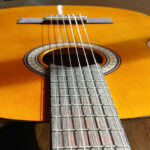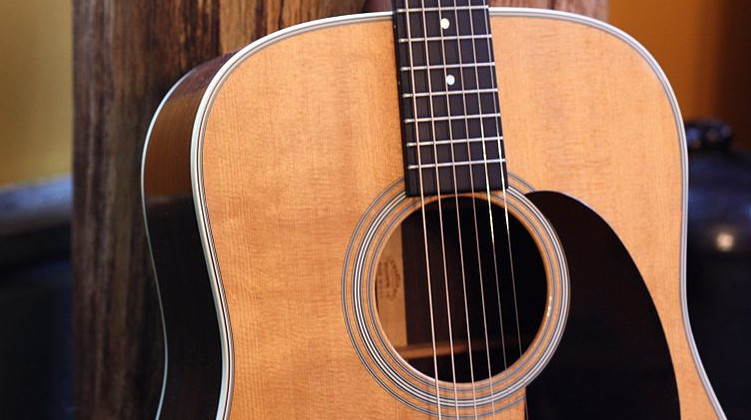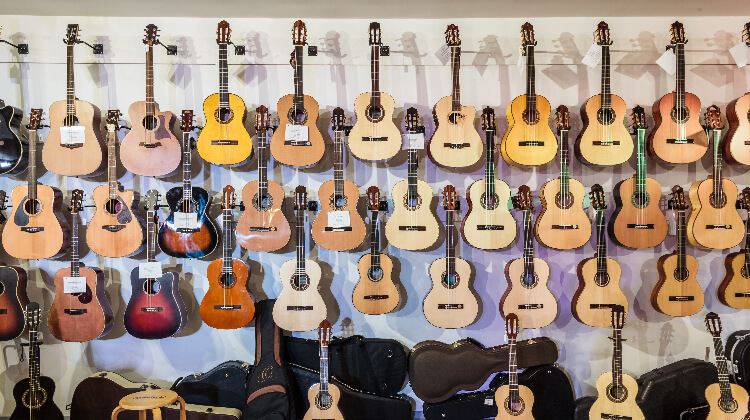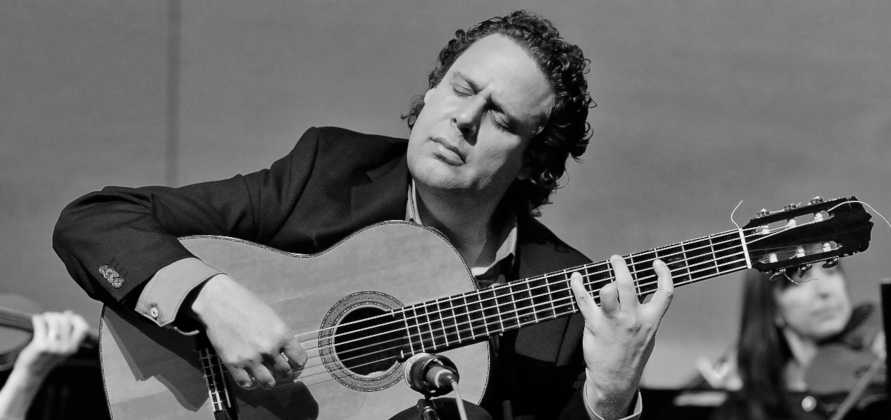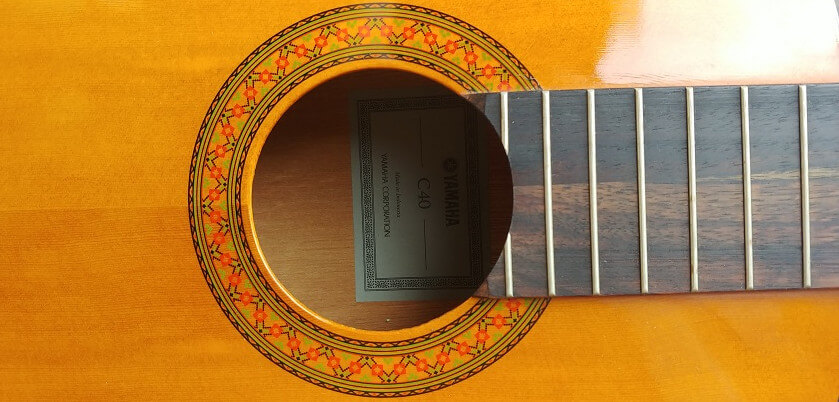
Beginner guitarists need a low-cost instrument that is durable, yet easy to play. The C40 is Yamaha’s solution to this demanding set of criteria.
In fact, the C40’s low price and consistent quality has made it one of the most popular nylon string guitars in the world. It is a favorite among guitar teachers and their students.
I recently bought a second-hand Yamaha C40 to run it through its paces. I’ve analyzed every aspect of the instrument to reveal its strengths and weaknesses.
Unlike other sites, I only write reviews of instruments I own or have rented for months. I never accept “free” gear from manufacturers or retailers and any revenue from the affiliate links in this article is reinvested back into the site’s research and reviews.
So if you want the real deal about the C40, read on.
Playability
A beginner’s guitar should be the right size and easy to play. If the guitar is too hard to play, a beginner is more likely to give up.
Playability is even more important than sound quality because it will take a beginner at least a year to learn how to exploit a higher-end guitar’s tone.
The C40’s dimensions are similar to other nylon string guitars in the beginner price range, with a standard 650 mm (25 9/16″) scale length. Younger or smaller players may prefer the 7/8, 3/4 or 1/2 size models, which are readily available.
A relatively high action
The action on the C40 is about 4mm at the 12th fret. I find this a little high although it is around average for many classical guitars. The C40 is still playable, but a higher action makes pressing the strings down harder on the fingers. This can discourage beginners.
Setting the action high gives the manufacturer a greater margin for error against imperfections in the fretboard. If the action is set too low, it can cause buzzing (where the strings rattle against the frets).
I’ve read Yamaha’s next models up, the C70 and C80, are set with a lower action although I haven’t had the chance to test this yet. A guitar tech can lower the action on the C40 given the saddle and nut are both set quite high.
The neck
Beginner guitars are often treated with little care and are easily damaged. Heat and humidity can warp the neck, affecting the intonation, and making it more difficult to play.
The neck of the second-hand Yamaha C40 I bought is slightly warped. This has pushed the action of the strings to above 5mm at the 12th fret, compared to about 4mm for a factory model, which you can see in the photo below. Warping can also affect the intonation.
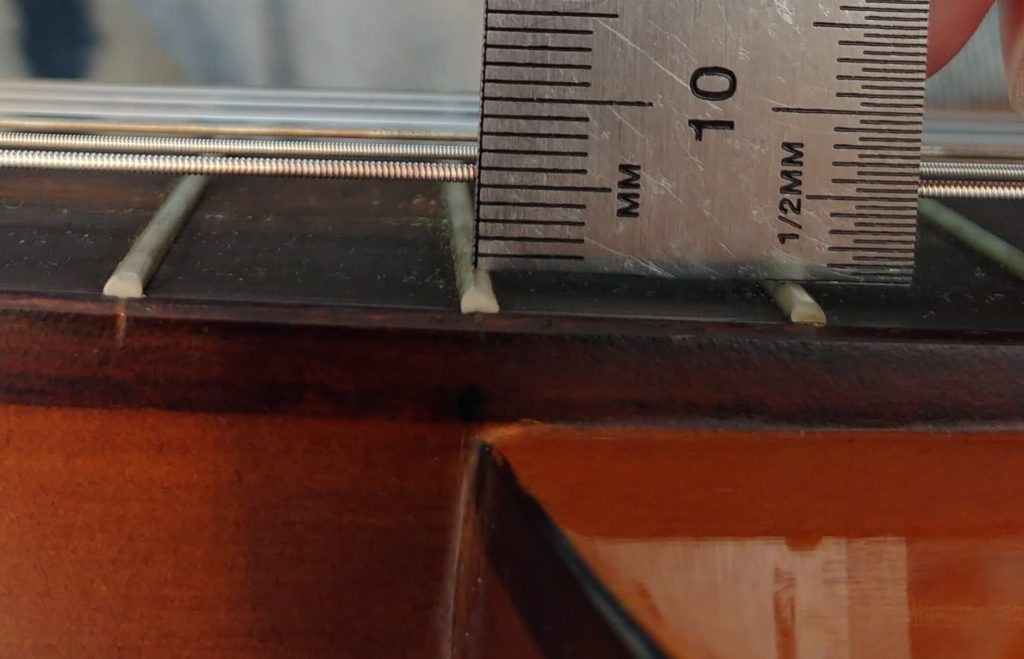
Traditional nylon string guitars such as Yamaha’s C series are more prone to warping because there’s no steel truss rod in the neck. I’m a fan of truss rods in nylon string guitars because it helps combat warping or bowing of the neck. (Truss rods are standard in steel string acoustics and electric guitars because even more tension is placed on the neck).
Truss rods are becoming more common in other beginner nylon string models. They provide more strength against the effects of heat and humidity and allows the action to be slightly adjusted.
The C40 needs to be treated with a little more care than some other guitars.
The neck of the C40 is also relatively thick compared to other guitars aimed at the beginner market. By my measure, the neck is about 24mm (0.945″) at the first fret.
Unusually, the C40 only has one fret marker dot on the side of the neck at the seventh fret. Most guitars will have fret marker dots at the third, fifth, seventh, ninth and twelfth frets. These make it much easier to accurately move the left hand between positions.
It’s a small detail, but adding the extra four dots would be more helpful for beginners. There are also no guitar strap buttons, as the C40 is marketed at classical guitar students who only play in a seated position.
The overall design of the C40 sticks very closely to the classical guitar tradition.
Sound quality
The sound of a guitar is limited by the quality of its construction. Beginner guitars are mass produced in factories. This keeps costs low (Yamaha builds its C series in Indonesia) but, without a luthier handcrafting the instrument, there’s naturally a higher number of minor faults.
The body
The C40 has a laminated spruce top, where multiple pieces of wood are joined together. Solid tops (which are made from a single piece of wood) produce a better tone but don’t exist in the beginner price range. The photo below shows the inside of the guitar top.
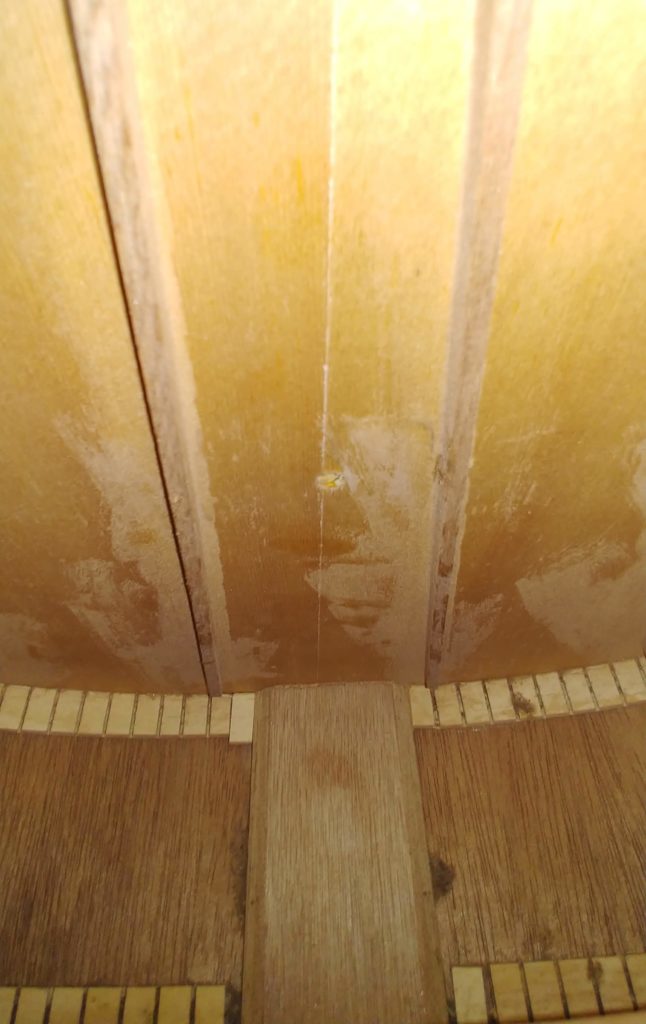
You can clearly see the join down the middle. The two strips of wood on either side are struts. The bracing is a simple design – there are only four of these struts. The small hole appears to be damage during construction. Also note the black dirt and dust – this is why you should keep your guitars upright on a stand!
The C40’s back, side and neck material is locally sourced tonewood based on availability “to minimize waste and support sustainable procurement”.
Changing the back and side woods is a smart choice by Yamaha to keep costs low given it is the guitar top (the choice of wood, its quality, and the bracing) which dictates most of the sound quality.
The Australian Yamaha site says the C40’s back and sides are made from laminated Catalpa while the neck is made from Okoumen. The C80 is built with Nato on the back and sides.
Perhaps the tonewoods change depending on what is available when the guitar is built. Many of the second-hand C40s I see for sale have a more orange coloured top and darker back and sides than the newer models.
A solid tone
I’ve read some people criticize the quality of the guitar strings that come with the C40. This is like buying a new car and criticizing the polish. You’ll need to change strings regularly as they wear, just as you need to wash your car to keep it clean.
There’s a world of choice when it comes to strings and they can change the sound of the guitar. I’ve strung my C40 with Savarez 500 CR Corum New Cristal strings.
The tone produced by the C40 is solid for a beginner’s guitar.
The verdict
The Yamaha C40 is a solid choice for a beginner’s guitar, particularly if the focus is classical guitar. The C40 sticks with classical guitar tradition: there are no small additions that would broaden its appeal such as guitar strap buttons.
It has its faults: the action is relatively high. A truss rod would ensure the neck doesn’t warp, which is an important consideration at this low price point.
You can buy a second-hand C40 for about half the retail price but I suggest buying new. It’s easy to damage a nylon string guitar and the neck can become bowed, raising the action further. Another option, particularly if price is still a factor, is Artist Guitars CL44AM.
The C40 is the guitar that thousands of students around the world have learned to play on over many years. It’s hard to argue with its success.
Yamaha C40 technical specifications
- Scale Length: 650 mm (25 9/16″)
- Body Length: 490mm (19 5/16″)
- Total Length: 995mm (39 3/16″)
- Body Width: 370mm (14 9/16″)
- Body Depth: 94-100 mm (3 11/16″-3 15/16″)
- Nut Width: 52 mm (2 1/16″)
- String Spacing: 11.8mm
- Top Material: Spruce
- Back Material: Meranti (or other locally sourced tonewood)
- Side Material: Meranti (or other locally sourced tonewood)
- Neck Material: Meranti (or other locally sourced tonewood)
- Fingerboard Material: Rosewood
- Bridge Material: Rosewood
- Nut Material: Urea
- Saddle Material: Urea
- Spruce top
- Meranti back & sides
- Rosewood fingerboard & bridge
- Gloss finish

